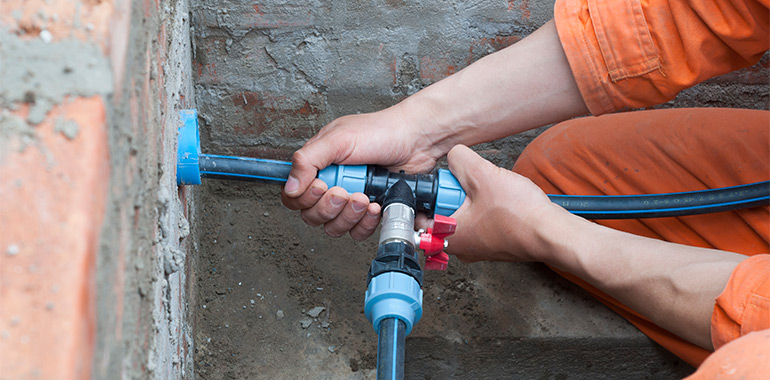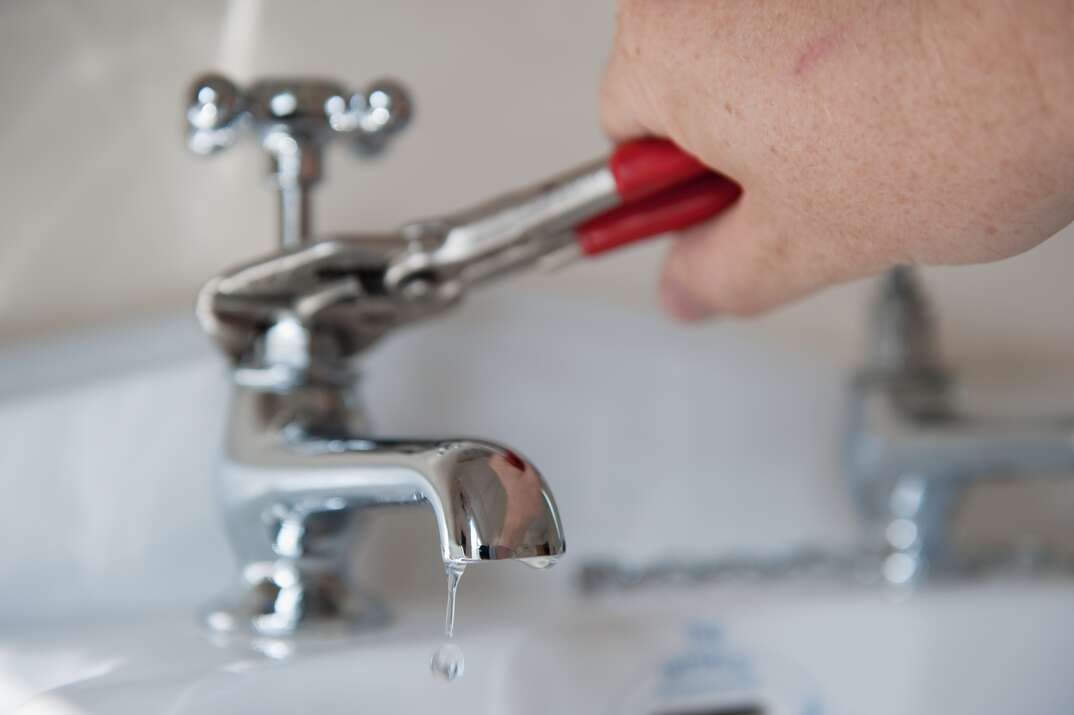Appliance Problems: When to Seek a Plumber's Help for Common Issues
This SiteWhat're your ideas about How To Fix Noisy Pipes?

To identify loud plumbing, it is important to identify first whether the unwanted sounds take place on the system's inlet side-in various other words, when water is transformed on-or on the drainpipe side. Noises on the inlet side have varied causes: too much water stress, used valve and faucet parts, improperly connected pumps or other appliances, incorrectly placed pipeline bolts, and also plumbing runs having a lot of tight bends or various other constraints. Sounds on the drainpipe side normally come from bad place or, just like some inlet side noise, a layout including tight bends.
Hissing
Hissing noise that takes place when a tap is opened a little normally signals extreme water pressure. Consult your local water company if you suspect this trouble; it will be able to tell you the water pressure in your area and can install a pressurereducing valve on the incoming water supply pipe if essential.
Thudding
Thudding sound, usually accompanied by shivering pipelines, when a tap or device shutoff is shut off is a problem called water hammer. The noise and vibration are caused by the resounding wave of stress in the water, which instantly has no area to go. Occasionally opening up a valve that discharges water quickly into an area of piping having a constraint, arm joint, or tee fitting can generate the very same problem.
Water hammer can typically be cured by installing installations called air chambers or shock absorbers in the plumbing to which the trouble valves or faucets are connected. These tools enable the shock wave produced by the halted flow of water to dissipate airborne they consist of, which (unlike water) is compressible.
Older plumbing systems may have short upright areas of capped pipe behind walls on tap competes the same objective; these can at some point full of water, reducing or damaging their performance. The remedy is to drain the water supply totally by shutting off the primary supply of water valve and also opening all faucets. After that open the major supply shutoff and shut the faucets one at a time, beginning with the faucet nearest the shutoff as well as ending with the one farthest away.
Babbling or Shrieking
Extreme chattering or shrieking that occurs when a shutoff or faucet is activated, which usually goes away when the fitting is opened totally, signals loose or defective interior parts. The option is to replace the shutoff or faucet with a brand-new one.
Pumps and devices such as washing equipments as well as dish washers can transfer electric motor noise to pipelines if they are improperly attached. Link such things to plumbing with plastic or rubber hoses-never rigid pipe-to isolate them.
Various Other Inlet Side Noises
Creaking, squealing, scratching, snapping, as well as tapping normally are caused by the growth or tightening of pipes, usually copper ones supplying warm water. The sounds happen as the pipelines slide against loosened fasteners or strike close-by residence framing. You can commonly pinpoint the place of the trouble if the pipes are subjected; just comply with the audio when the pipes are making sounds. More than likely you will find a loosened pipe wall mount or a location where pipes lie so near floor joists or other mounting items that they clatter against them. Connecting foam pipeline insulation around the pipes at the point of get in touch with need to remedy the issue. Make certain straps and wall mounts are safe and secure and offer appropriate assistance. Where possible, pipe bolts need to be attached to enormous architectural components such as foundation walls rather than to mounting; doing so decreases the transmission of vibrations from plumbing to surfaces that can magnify as well as move them. If affixing fasteners to framing is unavoidable, cover pipelines with insulation or other resilient product where they contact fasteners, as well as sandwich completions of brand-new bolts in between rubber washers when installing them.
Fixing plumbing runs that struggle with flow-restricting limited or many bends is a last resource that needs to be undertaken only after speaking with a competent plumbing professional. Sadly, this circumstance is relatively usual in older residences that might not have actually been constructed with interior plumbing or that have actually seen numerous remodels, specifically by beginners.
Drain Sound
On the drainpipe side of plumbing, the chief goals are to get rid of surfaces that can be struck by falling or rushing water and to insulate pipelines to have inescapable audios.
In brand-new building and construction, tubs, shower stalls, bathrooms, as well as wallmounted sinks as well as basins should be set on or against resistant underlayments to lower the transmission of audio with them. Water-saving bathrooms as well as faucets are less loud than standard designs; install them instead of older types even if codes in your location still allow utilizing older fixtures.
Drainpipes that do not run up and down to the cellar or that branch into horizontal pipe runs sustained at flooring joists or other framing existing specifically bothersome noise problems. Such pipelines are huge enough to radiate substantial resonance; they likewise carry substantial quantities of water, which makes the situation even worse. In brand-new construction, specify cast-iron dirt pipes (the large pipelines that drain toilets) if you can manage them. Their enormity includes a lot of the sound made by water going through them. Also, stay clear of directing drainpipes in wall surfaces shown bedrooms and rooms where individuals gather. Walls containing drains must be soundproofed as was explained earlier, making use of dual panels of sound-insulating fiberboard and wallboard. Pipelines themselves can be wrapped with special fiberglass insulation created the function; such pipes have an impervious plastic skin (in some cases containing lead). Outcomes are not constantly acceptable.
If Your Plumbing is Making These Sounds, There’s a Problem
A Bang or Thump When You Turn Off a Faucet
If a loud bang or thump greets you each time your turn off running water, you likely have a water hammer. A water hammer occurs when the water velocity is brought to a halt, sending a shock wave through the pipe. It can be pretty jarring — even worse, damaging to your plumbing system. All that thudding could loosen connections.
Strange Toilet Noises
You’re so familiar with the sounds your toilet makes that your ears will be attuned to anything out of the ordinary. Fortunately, most unusual toilet noises can be narrowed down to just one of several problems.
Foghorn sound:
Open the toilet tank Flush the toilet When you hear the foghorn noise, lift the float to the top of the tank If you’re ambitious, you can remove the ballcock valve and disassemble it to replace the washer. Or you can more easily replace the ballcock valve entirely. This device is relatively inexpensive and available at most any hardware store.
Persistent hissing:
The hissing following a flush is the sound of the tank filling. It should stop once the tank is full. But if the hissing continues, it’s likely because water is leaking out of the tank. The rubber flap at the bottom of the tank can degrade, letting water slip through and into the bowl. That’s why the tank is refilling continuously. Fortunately, this is an easy fix:
Cut the water to the toilet by closing the shutoff valve on the water supply line. Flush the toilet to drain the tank. Disconnect the flapper Attach the new flapper Gurgling or bubbling:
Gurgling or bubbling suggests negative air pressure in the drain line, likely resulting from a clog. As air releases, it causes the water in the toilet to bubble. This could either be a minor issue or a major one, depending on the clog’s severity. Clogs can be caused by toilet paper or more stubborn obstructions such as tree roots. If you can’t work out the clog with a plunger, contact a professional plumber for assistance because a clog of this magnitude could lead to filthy and unsanitary sewage backups in your sink bathtub.

As a person who reads on How To Fix Noisy Pipes, I imagined sharing that piece of content was really useful. Liked our blog? Please share it. Help somebody else check it out. I praise you for your time. Visit again soon.
Book Maintenance